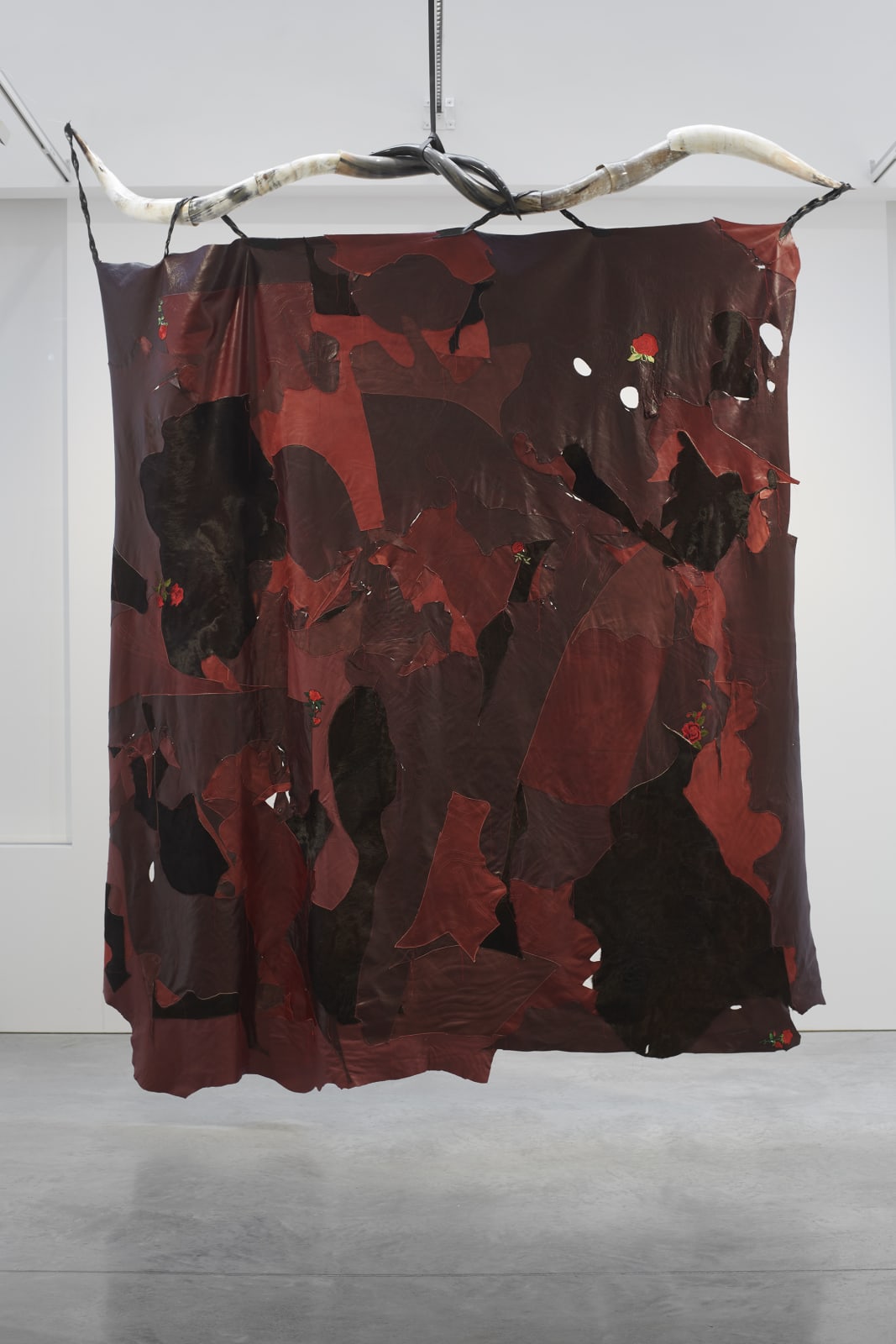-
Artworks






Como La Flor (Toreado), 2021
Leather, embroidered patches, acrylic, urethane, metal flake, steer horn120 x 120 in.
304.8 x 304.8 cm.Further images
Esteban Ramón Pérez’s practice points to his SoCal Chicano roots through sculpture and sculptural paintings. Ramón Pérez’s cardinal works are his large-scale leather paintings—a series that began with repurposing leather...Esteban Ramón Pérez’s practice points to his SoCal Chicano roots through sculpture and sculptural paintings. Ramón Pérez’s cardinal works are his large-scale leather paintings—a series that began with repurposing leather scraps found in his father’s upholstery shop in the Los Angeles area. After stitching together the scraps, the artist treats both suede and leather, or as he calls it, the “factory finish” side of the surfaces. On the suede, Ramón Pérez tapes down designs using a pinstriping method, an homage to his introduction to painting, which he attributes to lowrider culture. On the factory finish side, he sketches a design, often recalling his Chicano heritage, integrated with threads of postcolonial histories. The artist alters and blurs images using Photoshop to hint at the realities, or “distorted myths,” as Ramón Pérez would say, that are promised by American society. For example, his most recent work, Como la Flor, depicts a distorted image of the Mexican coat of arms. Ramón Pérez uses a tattoo gun, sans ink, to etch the image onto the surface; this method of scratching and puncturing the first layer of leather necessitates two to three rounds of mark-making to depict the chosen image. The combination of the detailed and delicate treatment of the leather with the undeniably tough and punk method of painting manifests into awe-striking works of powerfully honest representations of identity and dissent. The artists’ sculptural works, smaller in scale, offer viewers a similar sense of redemption. These works, boasting Ramón Pérez’s signature combination of brute technical skill with hyper-specific translations and reimaginations of Mexican folklore and familial history, speak to the subjectivities of the Mexican American community. These “objects of power”9 each made with various found and sourced materials including boxing gloves, pheasant and rooster feathers, metal studs, and ancho chiles, among others, radiate a resolute sense of dignity emblematic of the artists’ dedication to his practice and his heritage.Exhibitions
Un/Common Proximity, James Cohan, 48 Walker Street, June 12 - August 13, 2021











